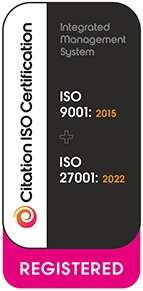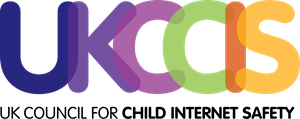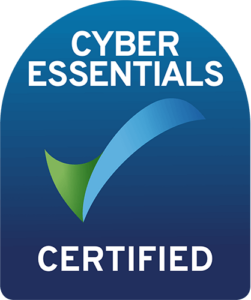In this article we’re going to have a look at the four main risk areas:
Content, Contact, Conduct and Commerce – the 4 C’s of Online Safety.
As adults, we instinctively know how to protect our children in the real world.
But when it comes to protecting them online, we assume that children have a greater technological expertise than us, which makes our understanding of their online lives seem that much more difficult.
UPDATE: Since recording, a new recommended addition, ‘Commerce‘ (also known as ‘Contract‘), has been added – we’ve updated our article to cover this risk area – read on to find out more.
The ‘digital natives’ mindset is wrong
This mindset often refers to children as being ‘digital natives’ and adults as being ‘digital immigrants’. But this whole concept has been has been massively debunked.
Yet despite this, it’s the excuse I still most commonly hear, with statements like — “I’m not tech savvy” — or even worse — “that’s the responsibility of the IT department”…
We all use technology to one extent or another. As adults we just use it a little differently. Crucially, as adults we already have a wealth of life experience, whereas children and young people do not.
So whilst children and young people may give the perception of being tech savvy, knowing how to use something and knowing how to use something appropriately are two very different things.
Considering the needs of children
We also need to consider the needs of children now that much of their life is happening online (including their social life).
Whilst we want to protect them as much as possible, protection isn’t about banning or overly restricting what they do. It’s instinctive to want to do this, but the reality is that being overly restrictive has a greater potential of turning a risky situation into a harmful one.
Children need to be allowed to take risks and push boundaries. It’s an inherent part of their development and for building resilience.
Imagine a child that’s never allowed to go out in the dark, or never allowed to go to the park on their own, or never allowed to speak to a stranger until they’re 18. That would be pretty ridiculous when you think about it, so why should it be any different online?
In the real world, we call it becoming ‘streetwise’. Online is no different. So this brings me onto the main point, which is categories of risk.
Categories of risk – the 4 C’s
Just remember the 4 C’s of online safety: Content, Contact, Conduct and Commerce.
You can apply the 4 C’s to anything.
For example, if you hear about a new game, a new app, a new YouTube channel or social media influencer – you don’t need to be tech savvy or an avid gamer just to be curious.
1. Content
Starting with ‘Content‘ – simply ask yourself “what content are they seeing?”
The online world has given rise to free and easy access to some incredible content, but there’s also content that would be deemed inappropriate, immoral or unethical – and of course illegal.
Apart from legality, this can be a tricky one as it’s a very subjective issue and normally determined by age, maturity, cognitive ability, religion and beliefs.
The amount of content out there is obviously huge, and though it goes without saying, it’s pretty easy to stumble across inappropriate content such as hateful or violent comments, videos or images.
This type of content isn’t necessarily illegal, but disturbing nonetheless. To give you an example, several years ago I went through a spate of school visits over about an 8 month period, where it wasn’t uncommon to speak to children who had seen a video of a beheading.
Now, obviously children and young people are not generally going out and searching for this type of content – it’s being shown to them. For example, if they use social networks and such content is shared, it could eventually turn up on their timeline, or if someone shares a YouTube video the same thing can happen there.
I could go on and on about content, but as an adult you’ll know what is illegal or what is inappropriate for that child or young person.
2. Contact
Usually when we talk about ‘Contact‘ risk, the first thing that comes to mind — and quite often the most concerning aspect for many adults — is the process of being contacted by an unknown person.
This often moves into areas such as grooming and child sexual exploitation which is a huge concern and it’s a growing concern too, with many police forces reporting a significant increase in cases being investigated.
But we need to be careful here as the figures don’t provide much in the way of clarity. For example, is the increase because more resources have been allocated and therefore more offenders being found. Or is it because more people are reporting?
The only fact is the fact that we don’t truly know. So when thinking about contact, just be curious about who they’re talking to. Ask yourself who’s contacting them and why they’re being contacted.
In the vast majority of cases, it’ll be completely harmless contact, such as somebody wanting to join an online game or making a comment of some sort. But sometimes it can be something entirely different.
3. Conduct
The next category is ‘Conduct‘. In other words, the way in which children are applying themselves or their behaviour online.
It could be how they speak to others in a game or on a social network, or comments left on a YouTube video.
It could be the photographs and videos they share online, or who they are talking to and ‘friending’.
Specifically, this is their behaviour. There’s a very general but perfectly correct understanding that if somebody is outgoing, a high risk taker, or very outspoken in the real world – then that will be replicated in their online behaviour.
It’s often true, but remember that this is also quite a generalisation.
4. Commerce
UPDATE: ‘Commerce‘ (also known as ‘Contract‘), is a new recommended addition.
This final category includes risks such as online gambling, inappropriate advertising, phishing and/or financial scams.
The world of digital commerce poses unique challenges for children. Targeted ads, often based on sophisticated algorithms, can blur the lines between content and promotion, making it difficult for young users to discern genuine content.
Even more concerning is the realm of in-app purchases in games, where children may unintentionally make costly decisions, not understanding the real-world implications. Added to this are the traps of “free” trials and online shopping that can mislead young users.
It’s crucial to use appropriate filtering and monitoring controls, as well as educating children about these commercial tactics to ensure their safe navigation of digital commerce.
Keeping online risks in perspective
The categories of Content, Contact, Conduct and Commerce are huge in their own right. I’ve tried to keep the explanations as concise as possible, but as a final point, it’s important for us to keep things in perspective.
We all know that children and young people face a variety of issues online, as they do in the real world too. But we also know that we are constantly inundated with media sensationalist headlines that tend to concentrate on the extreme ‘stranger danger’ type scenarios.
This media sensationalism does very little to help any of us and in fact can have the opposite effect. So bearing in mind that we do need to maintain a balance.
Key takeaways
There are two main points that I would like you to take away:
- Firstly, when considering risk, don’t focus on the technology as this can be misleading. Instead, focus on real world behaviour.
- Secondly, be very wary of media sensationalism. Don’t let it lead you into a knee jerk reaction. Think critically about what you’re reading or hearing, especially if you’re going to be talking to the students.
It can be very easy to get overwhelmed with all of the risk areas.
If there was such a thing as a risk list, it would be endless. My purpose is to simplify as much as possible.
The 4 C’s can be applied to any situation. Whether you’re discussing a concern with a child, or you’re a parent being nagged into buying a new popular game – use the 4 C’s as a starting point to steer you in the right direction.
In the next 3 articles in this series, we’re going to be discussing the three main online activities of children and young people – starting with Online Safety in Gaming for children and young people, but feel free to jump ahead to the topic of most interest to you:






